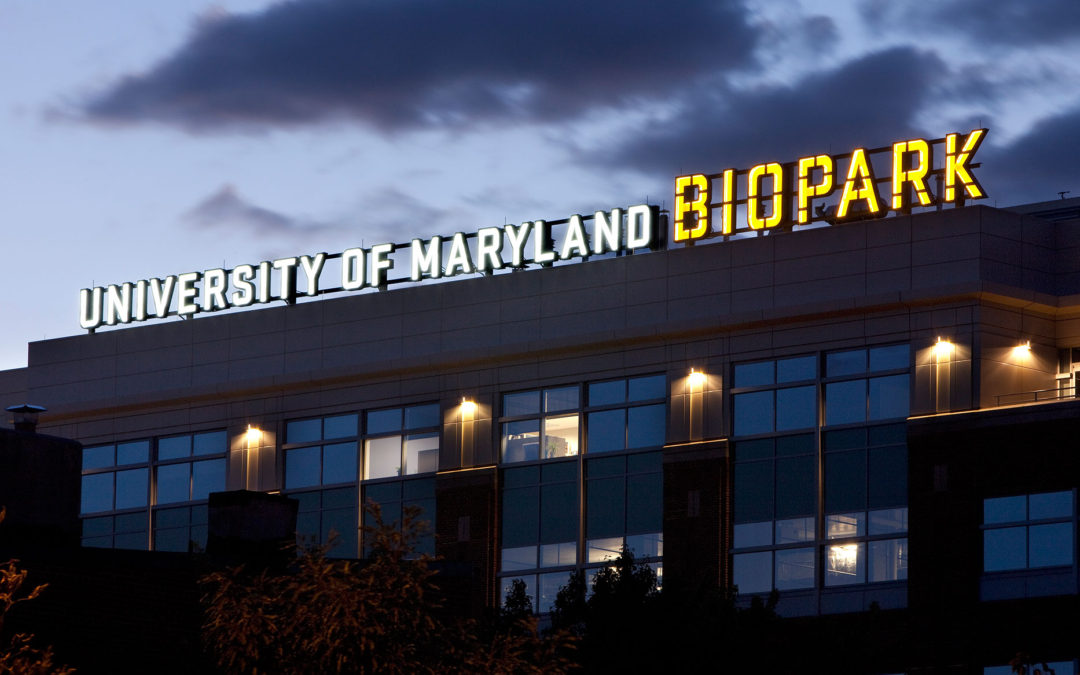technical.ly
Why Baltimore rose to the ‘top of the list’ when this biotech team needed a new HQ
By Stephen Babcock|Sep. 30th, 2019
As announced last week, the team that is commercializing a synthetic blood product relocated from St. Louis to downtown Baltimore, with the company taking up residence at UMB and joining the University of Maryland BioPark as an affiliate.
Nearby, at the campus’ University of Maryland School of Medicine (UMSOM), cofounder Chief Scientific Officer Dr. Allan Doctor is directing the recently formed Center for Blood Oxygen Transport & Hemostasis (CBOTH), while cofounder Dr. Dipanjan Pan is leading nanobiofabrication at the center and become a professor at UMSOM and University of Maryland, Baltimore County.
Along with cofounder Dr. Philip C. Spinella, the team developed a proof-of-concept at the Washington University School of Medicine for its product. Called ErythroMer, the substitute is designed to capture and release oxygen like a living red blood cell.
The team believes the product will be able to be used following trauma, when patients have a need for blood. It can also be freeze-dried, which will enable it to be stored without being refrigerated in areas like ambulances, medevacs and in remote settings.
“The reality is that blood loss is the leading cause of preventable death after trauma and in the U.S alone there are 25,000 people that die because they aren’t getting blood replaced quickly enough,” Haynes said. “Our goal is to provide that bridge from the point of injury in a pre-hospital setting before a patient can get to a higher echelon of care.”
The move came as the company was seeking to expand research that brought together a number of different disciplines, CEO Elaine Haynes said. Key for the company was an area that could bring together colleagues in close proximity.
“UMB very quickly rose to the top of that list of opportunities, and the more we talked with UMB and the School of Medicine the clearer it became this was the right choice for us,” Haynes said.
She pointed to a few reasons.
For one, it was important to get the company all colocated in one office and research area. Previously, she worked in a coworking space to run the business, while lab research for the company took place at a different setting. Now, they’ll all be in one area. And it’s an area within a wider university system where they can tap into talent, resources and potential partnerships. It also makes collaboration easier on the academic side.
“The ecosystem has been very welcoming and already very collaborative in wanting to help,” Haynes said. “There are a number of success stories in the area that we can learn a lot from.”
To find others working in the field that might be an interesting place to explore future partnerships, the team need look no further than across the street, where University of Maryland Shock Trauma is treating patients or research is taking place on the campus.
And in Maryland, the team sees existing partners and funders that are affiliated with the federal government like the U.S. Food and Drug Administration, the National Science Foundation and the NIH’s National Heart, Lung, and Blood Institute Small Business Program. With the potential to be used in military settings, the company is also working with the U.S. Department of Defense Army Combat Casualty Care Research Program.
“Having all of those within driving distance or walking distance is really going to accelerate our development,” Haynes said.
With the new base of operations, the company is looking to grow. Backed by $6 million in funding, it is currently in a pre-clinical development phase, meaning it is working toward clinical trials with patients. That could happen within three years.
In the meantime, Haynes is looking to add three employees to the two-person team by the end of the year, including a chemist and a specialist in scientific and technical development.
With the research base, Haynes said there’s promise that more companies could develop with ties to CBOTH, as well. After all, such centers often make discoveries that become future startups.
To BioPark President James Hughes, such teams can be key as the community grows.
“Many of the top academic research groups are spinning out multiple companies,” he said. “We are focusing on bringing these academic/industry teams to UMB and the BioPark through tightly integrated recruitment efforts. Academic research and startups go hand-in-hand; you need both to have a healthy ecosystem.”

